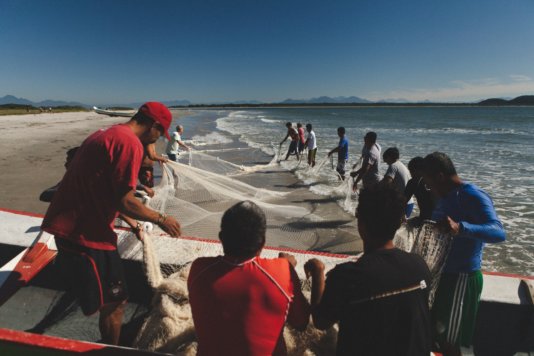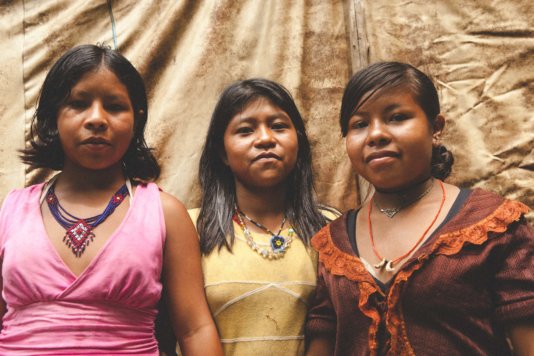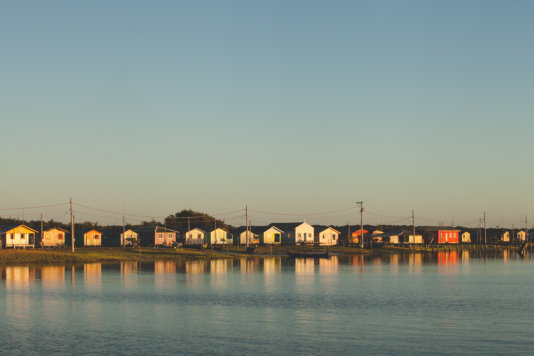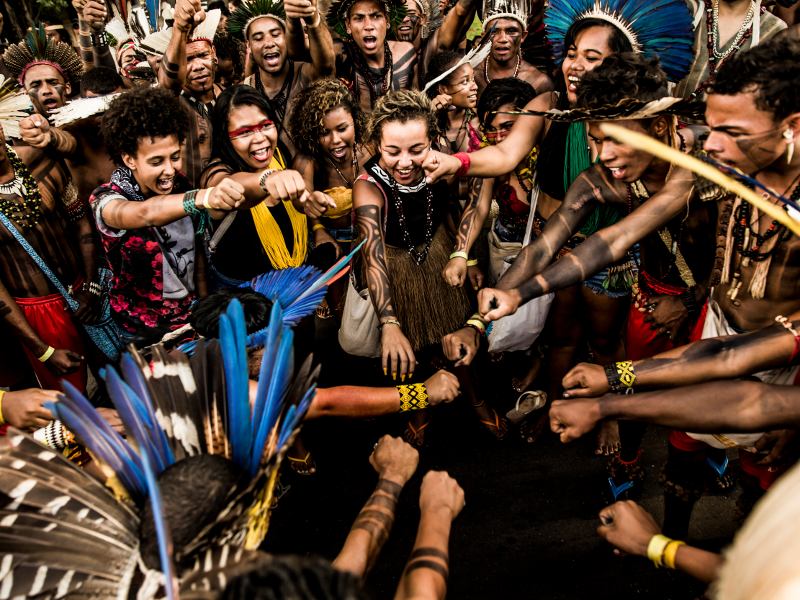- About
- Topics
- Picks
- Audio
- Story
- In-Depth
- Opinion
- News
- Donate
- Signup for our newsletterOur Editors' Best Picks.Send
Read, Debate: Engage.
| December 20, 2019 | |
|---|---|
| topic: | Sustainable Development |
| tags: | #tourism, #environment, #Brazil, #Latin America |
| located: | Brazil |
| by: | Ellen Nemitz |
The slogan “tourism yes, port no” tries to convince public opinion and the government about all potentially threatening consequences of a destructive environmental policy in the state, which privileges a supposed economic development over nature conservancy and sustainable tourism.
One of the places that can be irreversibly changed is Ilha do Mel (or Honey Island, in English), an ecological spot and an UNESCO World Heritage Site. An entrepreneur wants to install a container port and an infrastructure range, that includes a road crossing the Atlantic Forest, just three kilometres away from the island. João Carlos Ribeiro, who is aiming to construct this port since 1970s, claims to the governor and to the press that it would boost the economy by allowing international trade by sea. However, according to Clóvis Borges, executive director of Society for Wildlife Research and Environmental Education, this is not true, because Parana, which has the second smallest coast of the country, already has two underutilised ports in less than 60 miles long, located in Paranaguá and Antonina.
On the other hand, the environmental impact is immeasurable. “It is not only the road itself that causes deforestation. An undertaking like this causes an exodus, because people from different parts of the country and even from abroad will come to work on the building and this will cause a pressure on the ecosystem. The city will grow over the forest creating an uncontrollable urban growth”, says Borges. Besides, the researcher Dr. Dailey Fischer, Executive Coordinator of Coast Conservancy Observatory of Parana, complains that there are no synergic studies: no one evaluated the whole impact of the venture, that includes several licenses to enterprises.
It is estimated that around 27 millions square meters of the last remaining Atlantic Forest in the country (less than 7% of this biome is preserved) could be destroyed directly or due to real estate and enterprises' activities, many species of land animals would be affected (some of them endemic, that is, live only in these regions, such as jaguars and some kinds of parrots). A reproduction area for dolphins and sea turtles could be condemned by pollution, which would also harm other marine species already affect by the other ports in the region. In addition, OJC reports at least 40 families from the local Maciel community and two Guarani indigenous populations, both living there since more than a hundred years, under risk of being displaced. Even if they stay, the fishing and tourism decay would deteriorate these people’s livelihood.
“This [port] would not help us, it would be very bad for our community”, says Milla Maria Neves, one of the leaders of Maciel community. Milla reminds FairPlanet that the entrepreneur who is leading the negotiations with the state government has also been threatening the families and preventing them from having their houses in the area for years. Her own family was a victim of men putting fire on their house, and the police did not do anything to help.
Furthermore, all the platforms, the road and other structures needed for the port will cost, just for the first stage, around 100 million dollars from public safe. In order to obtain public support, the government and some media vehicles use the new road as a catching point, because every year thousands of tourists and local people get stuck in the traffic trying to reach the beach. However, studies point out that more than 500 trucks would cross the road every day, so the traffic would not be benefited. On the other hand, the Environmental Impact Study indicated that there would be more than 170 negative consequences to people and nature.
Alternative plan
The Conservancy and Justice Observatory has crowdfunded to present the public managers an alternative plan made by architects and engineers to boost sustainable tourism and to preserve all the ecosystem of Ilha do Mel. “We proposed a structure with cycling paths, viewpoints, pedestrian crossing, among other improvements, including traffic ones, with less impact on nature”, says Claudia Guadagnin, journalist of the institution. She also states that it would be important to invest in health, security and education for people living on the island. The alternative plan was presented but, until now, there are no signals that it will be implemented. “It sounds that they already have a decision, [and] just want to seem democratic”, says the journalist.
Besides dialogue, some legal measures are being taken. The lawyer Hassan Annan is working to defend the rights of some families, using documents which attest to their land ownership. He explains that the processes are individual for those families he represents, but in case of success others could be benefited. “It is also important that the Public Prosecutor’s Office be alert and proactive”, says Hassam. It is: the prosecutor Priscila da Mata Cavalcante tells about a determinant work made to classify one community of the island as traditional, which gives them protection — others did not want to for economic reasons. Also, the office in Paranaguá has been working on several actions to guarantee the protection of environment, tourism and communities' lives.
The sustainable tourism and the environment are under risk as well in other parts of Parana: a little hydroelectric station aimed to be constructed near Prudentópolis, a city which houses beautiful waterfalls, can interfere in a river course (of Rio dos Patos), affecting tourism and, of course, biodiversity — here too the Public Prosecutor’s Office has succeed to stop, at least for now, licenses being granted to this venture. At the Iguaçu National Park, where the world famous and natural wonder Iguaçu Falls are, an attempt to reopen the Colono’s road is a threat to the Atlantic Forest, which has come to life again in the last years.
The coordinator of Committee on the Environment in the Legislative Assembly of Parana, deputy Goura, is an outstanding politician for environment defence. He highlights the necessity of preventing this kind of ventures of going ahead and of investing in sustainable policies. Deputy tells that he and other politicians are taking different measures to mobilise people and institutions to preserve the environment and boost ecological tourism in Parana, preventing the governor from allowing these ventures.
For people to be part of this movement, OJC developed a teaser explaining the whole impact of the project and a website were people can send messages pressuring public rulers to stop the licenses’ grants (in Portuguese). However, the current situation is not encouraging. “Thousands of messages were already sent. Until now, not even one reply from government”, reports Claudia.
Forests, world heritages and national parks under risk
Despite some cases of environment conservancy efforts, such as Fernando de Noronha Island, which has recently been declared single use plastic free, and Bonito (in the state of Mato Grosso do Sul), winner of some sustainable tourism prizes, what is going on in Brazil is an attempt against natural spots.
In the city of Rio de Janeiro, around one hundred hectares of Camboatá forest — home to many species — is threatened by a planned racetrack construction. In December, the federal government qualified three natural sites to the National Privatisation Program: Iguaçu National Park (in Parana) — also an UNESCO World Heritage Site —, Lençóis Maranheses (in Maranhão) and Jericoacoara (in Ceará). The government also aims to include other natural sites in this program. Furthermore, deforestation and fires put in risk some extremely important biomes, such as Amazon Forest and Cerrado.
Latin America as well faces a dubious situation when talking about sustainable tourism: some places highlight by their advanced environmental friendly policies — for example, Galapagos Islands, in Ecuador, house of animals such as Giant Turtles, maintain a rigid process of inspection of all tourists to prevent them from bringing strange species and charge them to enter the archipelago, investing the money in conservancy and research. On the other hand, there are examples of serious danger to natural and historical heritage in the continent. It is the case of Peru: communities around Machu Picchu are fearing the consequences of a new airport that is to be constructed in Cusco, the city from which to visit one of the seven modern wonders of the world. The airport, whose construction will probably begin in 2020, is being planned to supposedly facilitate tourism, but in practice may cause irreparable damage to Incan ruins.
Sustainable development goals
Investing in tourism while protecting the environment is a way to achieve UN 17 Sustainable Development Goals for 2030. So, it is urgent for all governments to make a commitment to environmental conservancy and to sustainable development, as this is the way into a better and sustainable life. As the prosecutor Priscila da Mata Cavalcante says, “the human being is invisible in Brazil”. It is time to act and make human beings and all natural life visible and valuable.
By copying the embed code below, you agree to adhere to our republishing guidelines.



